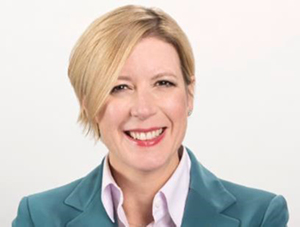STORIES
2025 outlook: Strong economy, inflation, policy pivot on the horizon
January 7, 2025
U.S. Bank Chief Investment Officer Eric Freedman and Chief Economist Beth Ann Bovino discuss the year ahead
What are you watching going into the New Year?
Freedman: We’re keeping an eye on several things, including growth, inflation, and the incoming administration’s policy agenda regarding taxes, trade, regulation and immigration. All of these issues have implications for the bond market, which we think will set the tone for the investment landscape in 2025.
Bovino: We think the Fed will cut interest rates just two times in 2025. The reason for that is due to continued economic strength, which is keeping inflation sticky, and the fact that the new administration’ s proposals for tariffs and tax cuts, in a full-employment economy, are both potentially inflationary. The Fed raises rates to reduce inflation by making borrowing more expensive, which cools demand; it lowers rates to boost a flagging economy and job market. The Fed is still not where it wants to be – at around 2% inflation. Right now we’re at about 2.7%.
Prices for everything have been high for so long. Will they finally come down in 2025?
Bovino: Price gains have moderated from 40-year highs, but prices remain high and a challenge for most consumers. The still-relatively healthy jobs market with the unemployment rate near historic lows, has supported consumer spending so far, helping to overcome inflation and higher costs to borrow money. But increased costs for auto repair, travel, rent and mortgage payments and insurance premiums are all contributing to the higher cost of living.
Freedman: We’re starting to see some strain among some consumers, particularly those with lower incomes. In fact, according to a New York Federal Reserve survey, an increasing proportion of consumers believe that they will miss a minimum debt payment over the next few months. We are also hearing from companies we follow that they are running a lot of promotions to get customers into restaurants and stores, so gauging what consumers did through the holiday season will be key.
Part of our post-holiday season spending trend analysis centers on how potential tariffs flow through to business and consumer trends. Tariff-induced price increases may be passed on to consumers, leading inflation to accelerate in the near term and perhaps even preventing the Fed from cutting interest rates as much as they had planned or as much as some had hoped. We’ll first see the impact with goods from China, Mexico and Canada as these three countries have been identified as the primary targets for tariffs by the incoming administration.
Interest rates: higher for longer?
Bovino: That seems to be the case. Thanks to still-sticky inflation and some of President-elect Trump’s proposed economic policies that could be inflationary if enacted, we don’t see that many rate cuts on the horizon.
Take tariffs, for example. U.S. importers pay the tariff, then typically pass some or all of that cost along to consumers in the form of higher prices. And, as tariffs raise the cost of imports, it makes it easier for U.S. producers to raise their own prices.
We believe the economy will still grow in 2025, but slowly, and we believe we’ll see a soft landing – or, in other words, a slowdown in economic growth that ends without a recession.
Freedman: The U.S. economy has lived in a lower interest rate environment for 18 years. If interest rates remain elevated due to inflation or other concerns, companies and businesses will face higher borrowing costs, and they may adjust by lowering their spending, which in turn could hurt corporate profits. Lower corporate profits is typically associated with weaker stock prices.
Anything people should do in the first half of the year?
Freedman: As policy measures firm, engaging with an investment professional on how potential tax changes may impact decisions is a great step to take.
Bovino: While the Republican clean sweep indicates that many of the new administration’s proposals will likely become policy, timing and implementation of new tax policies and regulations are unclear. So it’s good to plan ahead for any possible changes on the horizon while you can.
Here are a few articles that can help:
- Cash management and investing strategies when interest rates are elevated
- Trump’s key economic proposals and potential investment ramifications
If I want to invest money right now, what do you recommend?
Freedman: Right now we like technology companies, even at their elevated valuation levels, with the view that corporate CFOs will continue to allocate more budget dollars to areas like artificial intelligence to enhance productivity. We also like companies focused on data capture, storage, processing, software and analytics, security and distribution.
AI data centers will consume disproportionately more electricity than data centers in the past, creating an opportunity for companies involved in expanding electric grid capacity.
Similarly, defensive/income-oriented sectors such as Real Estate, Utilities, Consumer Staples, Industrials and select Healthcare companies should continue to respond favorably to the Fed’s less-restrictive policy stance as lower Treasury yields reduce the competition from bonds for dividend-paying securities.
Additionally, Utilities sector performance was a standout in 2024, up 24.1%, the fifth-highest-performing S&P 500 sector. Select Utilities companies stand to benefit from anticipated increased power needs associated with data centers and AI-based application buildout, but their returns can be dependent on interest rates so we will continue to monitor that relationship.
We do expect the S&P 500 to be higher next year, but we do anticipate more volatility than we have experienced over the past two years.
Take a deeper dive into the markets and economy in the U.S. Bank 2025 Investment Outlook.


